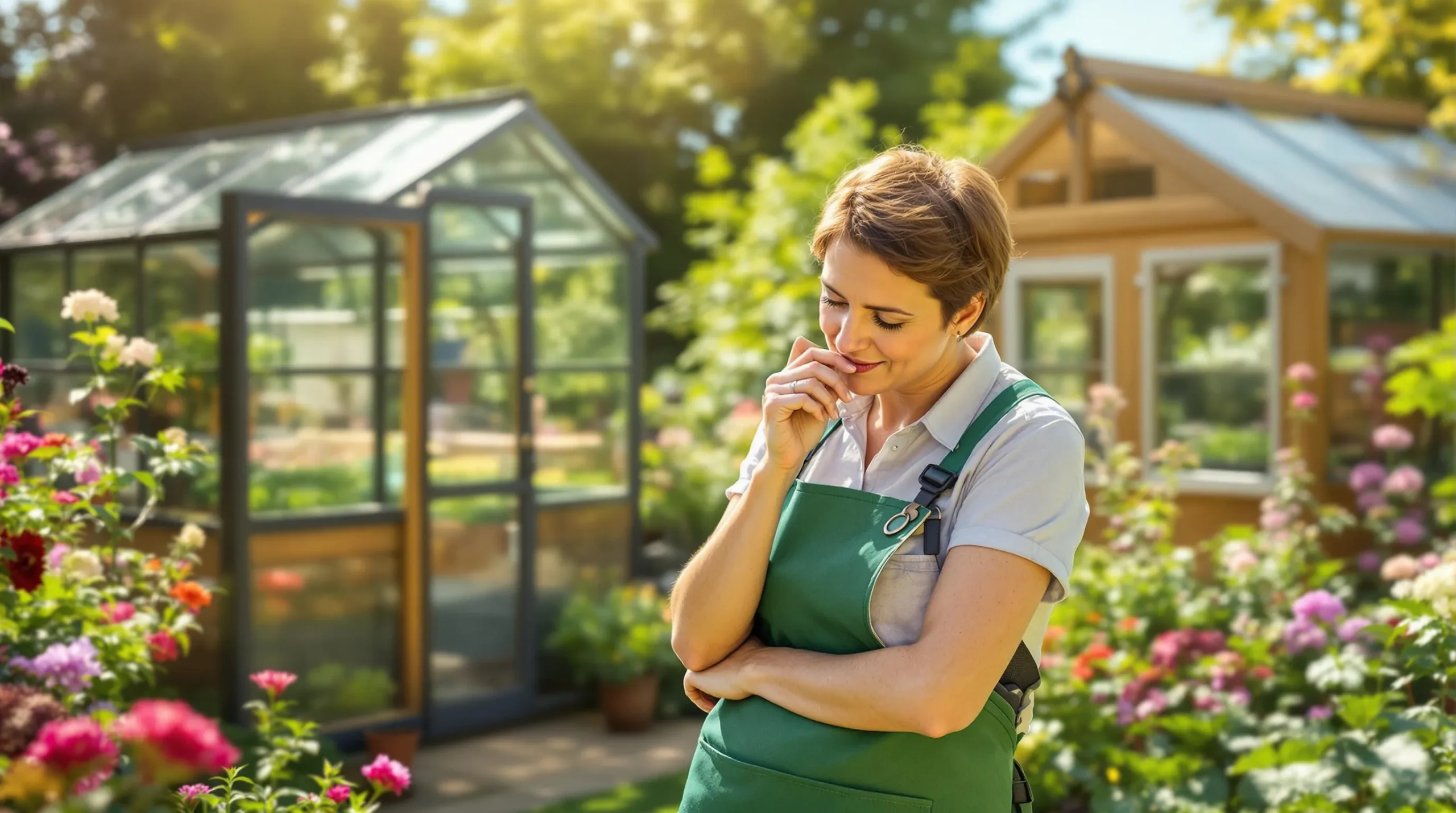
How to Choose Your First Greenhouse: A Complete Beginner’s Guide for 2025
Learn how to choose your perfect first greenhouse with our expert guide. Discover size, materials, and features to extend your growing season by 2-3 months.
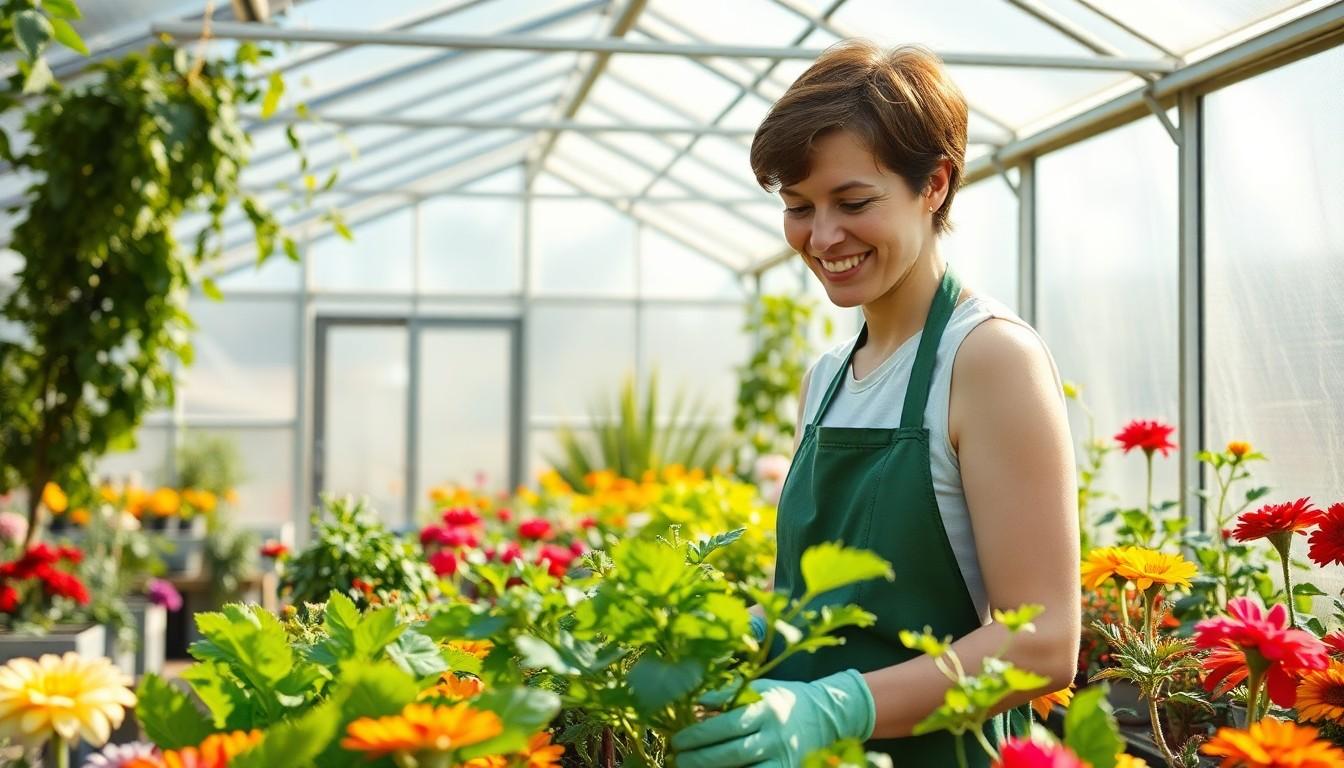
If you want to create a peaceful garden space, consider a polycarbonate greenhouse. These modern structures offer strength, easy maintenance, and the perfect environment for plants to thrive. Unlike traditional glass, polycarbonate panels insulate better and resist shattering, providing a safer option.
Their biggest advantage lies in their ability to evenly distribute sunlight, helping plants grow strong and healthy. The nearly unbreakable, flame-resistant panels also make them a great choice for families with children or pets.
Polycarbonate greenhouse materials combine durability with optimal growing conditions for plants. The materials include specific types of glazing panels and structural frame components that work together to create an efficient growing environment.
Polycarbonate glazing panels come in three main configurations:
| Panel Type | Light Transmission | R-Value | Typical Lifespan |
|---|---|---|---|
| Single-wall | 90% | 0.83 | 10 years |
| Twin-wall | 80% | 1.54 | 15 years |
| Triple-wall | 75% | 2.50 | 20 years |
The frame structure supports the polycarbonate panels through these primary materials:
| Frame Material | Weight Capacity | Cost Range (£/m²) | Installation Difficulty |
|---|---|---|---|
| Aluminium | 15-20 kg/m² | 45-60 | Low |
| Galvanised Steel | 25-30 kg/m² | 55-75 | Medium |
| uPVC | 10-15 kg/m² | 35-50 | Low |
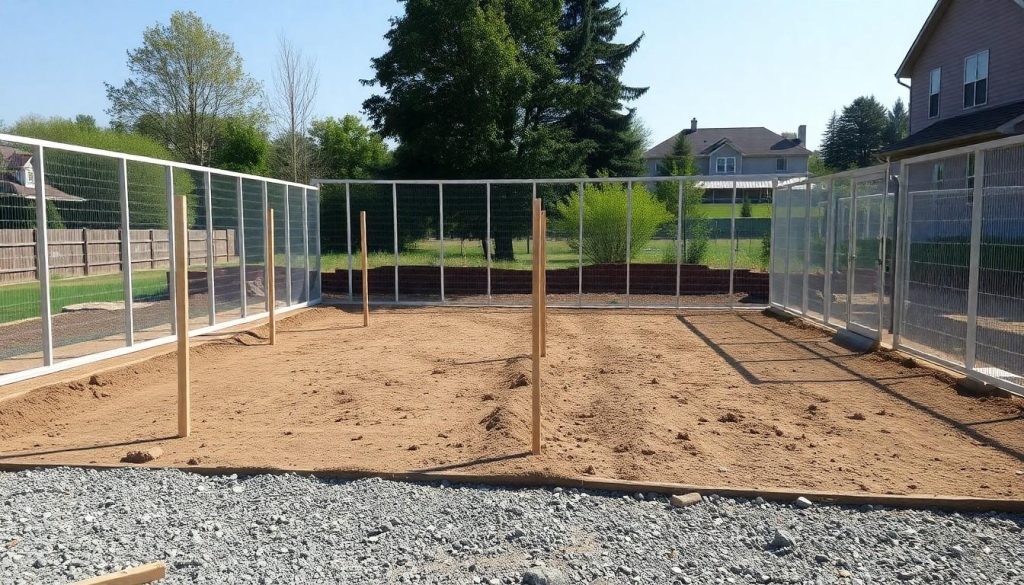
Successful polycarbonate greenhouse construction depends on careful planning and precise site preparation. Creating a stable foundation forms the basis for a lasting greenhouse structure that maximizes growing potential.
The foundation preparation process establishes stability for your greenhouse structure. Clear the designated area of vegetation, rocks, tree stumps and debris to create a clean construction space.
Concrete Slab Foundation:
The greenhouse dimensions affect both growing capacity and installation requirements. Select measurements that match your available space and growing goals.
| Component | Recommended Size |
|---|---|
| Width | 9-16 feet |
| Side Clearance | 18 inches minimum |
| Foundation Depth | 4 inches |
| Gravel Layer | 2 inches |

Polycarbonate greenhouse construction requires precise execution in three main phases: frame assembly, panel installation, and component setup. Each phase involves specific techniques and considerations to create a stable, functional growing environment.
Frame assembly starts with laying out all components in their designated positions. Here’s the systematic approach:
Polycarbonate panel installation demands careful handling to prevent damage and ensure proper sealing:
| Component | Installation Time | Number of Fasteners |
|---|---|---|
| Frame Assembly | 4-6 hours | 24-36 bolts |
| Panels | 2-3 hours | 12-18 clips |
| Door & Vents | 1-2 hours | 8-12 screws |
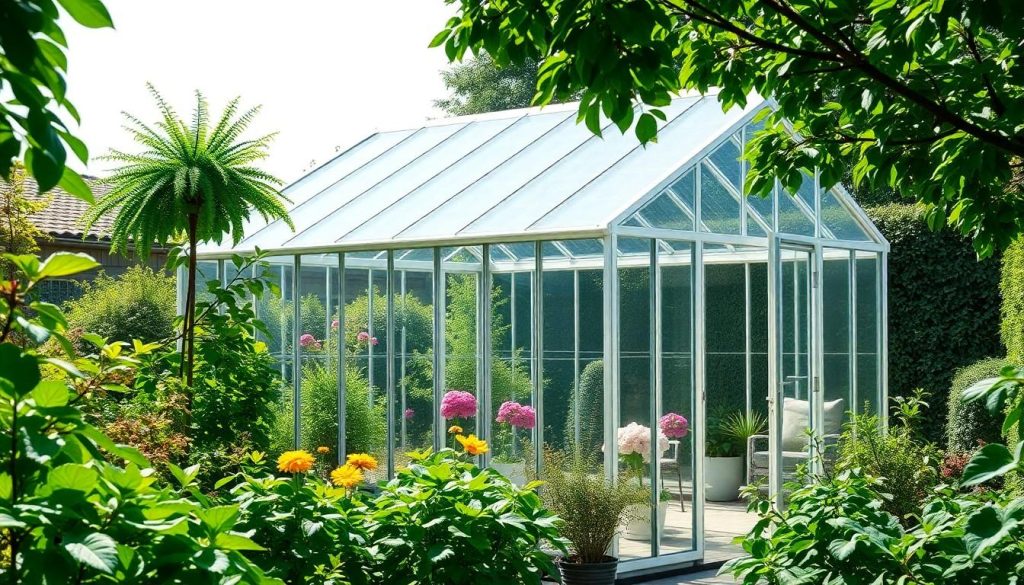
Polycarbonate greenhouse panels deliver exceptional durability with a lifespan of 10-20 years when maintained properly. The panels feature UV-stabilized construction that resists degradation from sun exposure.
Polycarbonate greenhouses shield plants from harsh weather conditions through multiple protective features:
Regular maintenance preserves the performance and appearance of polycarbonate panels:
| Task | Frequency | Method |
|---|---|---|
| Surface wash | Monthly | Soft cloth with mild soap solution |
| Deep clean | Bi-annual | Non-abrasive cleaner and soft brush |
| Seal check | Quarterly | Visual inspection of gaskets |
The 50-micron UV protective layer maintains panel clarity for 10+ years when cleaned regularly. Twin-wall and triple-wall designs deliver superior insulation compared to single-pane glass, with heat retention rates 40% higher.
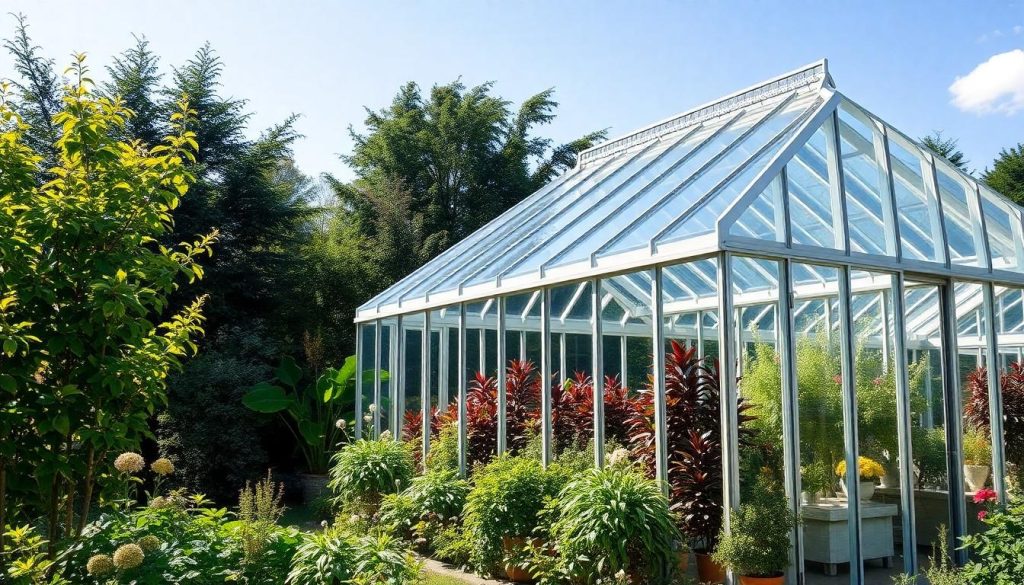
Polycarbonate greenhouse construction offers significant cost advantages compared to traditional glass structures. The total investment combines initial expenses material quality costs with long-term operational benefits.
Polycarbonate panels present a cost-effective alternative to glass, with prices starting at £0.09 (US$0.12) per square foot. Here’s how the materials compare:
| Material Type | Cost per Square Foot | Lifespan (Years) |
|---|---|---|
| Polycarbonate | £0.09 – £1.50 | 10-25 |
| Glass | £1.50 – £1.90 | 40-50 |
Key cost factors include:
The economic advantages of polycarbonate greenhouses extend beyond the initial purchase:
Energy Efficiency Benefits:
Financial Returns:
Investing in a polycarbonate greenhouse sets you up for long-term gardening success. Its durability, UV protection, and excellent insulation make it ideal for year-round growing.
With careful planning and regular upkeep, your greenhouse can flourish for decades. Polycarbonate panels, combined with different frame options, allow you to customise a structure that suits your needs and budget.
Whether you’re a hobby gardener or a dedicated horticulturist, a polycarbonate greenhouse offers the perfect balance of practicality and value. Enjoy extended growing seasons, better plant protection, and lower maintenance costs for years to come.
With proper maintenance, polycarbonate greenhouses can last between 10-20 years. The UV-stabilised panels resist yellowing and degradation, whilst the sturdy frames maintain structural integrity. Regular cleaning and proper care can extend their lifespan significantly.
Polycarbonate greenhouses offer several advantages over glass. They’re virtually unbreakable, provide better insulation, and are significantly lighter. They also diffuse light more effectively, reducing plant scorching, and are more cost-effective. However, they may have slightly lower light transmission than glass.
For most home greenhouses, 4mm twin-wall polycarbonate is ideal. This thickness provides good insulation and light transmission whilst remaining cost-effective. For colder climates or commercial use, 6mm or 8mm triple-wall panels offer enhanced insulation but at a higher cost.
Regular maintenance includes cleaning panels with mild soap and water, checking seals and fixtures, ensuring proper ventilation, and clearing gutters. Avoid using abrasive cleaners or tools that might scratch the surface. Inspect for damage after severe weather and repair any gaps promptly.
A level, stable foundation is essential. Options include concrete slabs, paving slabs, or concrete strip foundations. The foundation should extend slightly beyond the greenhouse dimensions and be perfectly level to ensure proper assembly and structural integrity.
Prices typically range from £500 to £3,000, depending on size and specifications. Basic models start around £500, whilst larger or premium models with additional features can cost upwards of £2,000. Frame material and panel thickness significantly influence the final price.
Yes, ventilation is crucial in a polycarbonate greenhouse. It helps regulate temperature, control humidity, and prevent disease. Most greenhouses need roof vents, door vents, and possibly additional louvre windows for optimal air circulation.
Yes, when properly anchored, polycarbonate greenhouses can withstand significant wind loads. Their lightweight yet durable construction, combined with proper foundation and anchoring, makes them resilient to most weather conditions. However, additional bracing may be needed in extremely windy areas.

Learn how to choose your perfect first greenhouse with our expert guide. Discover size, materials, and features to extend your growing season by 2-3 months.
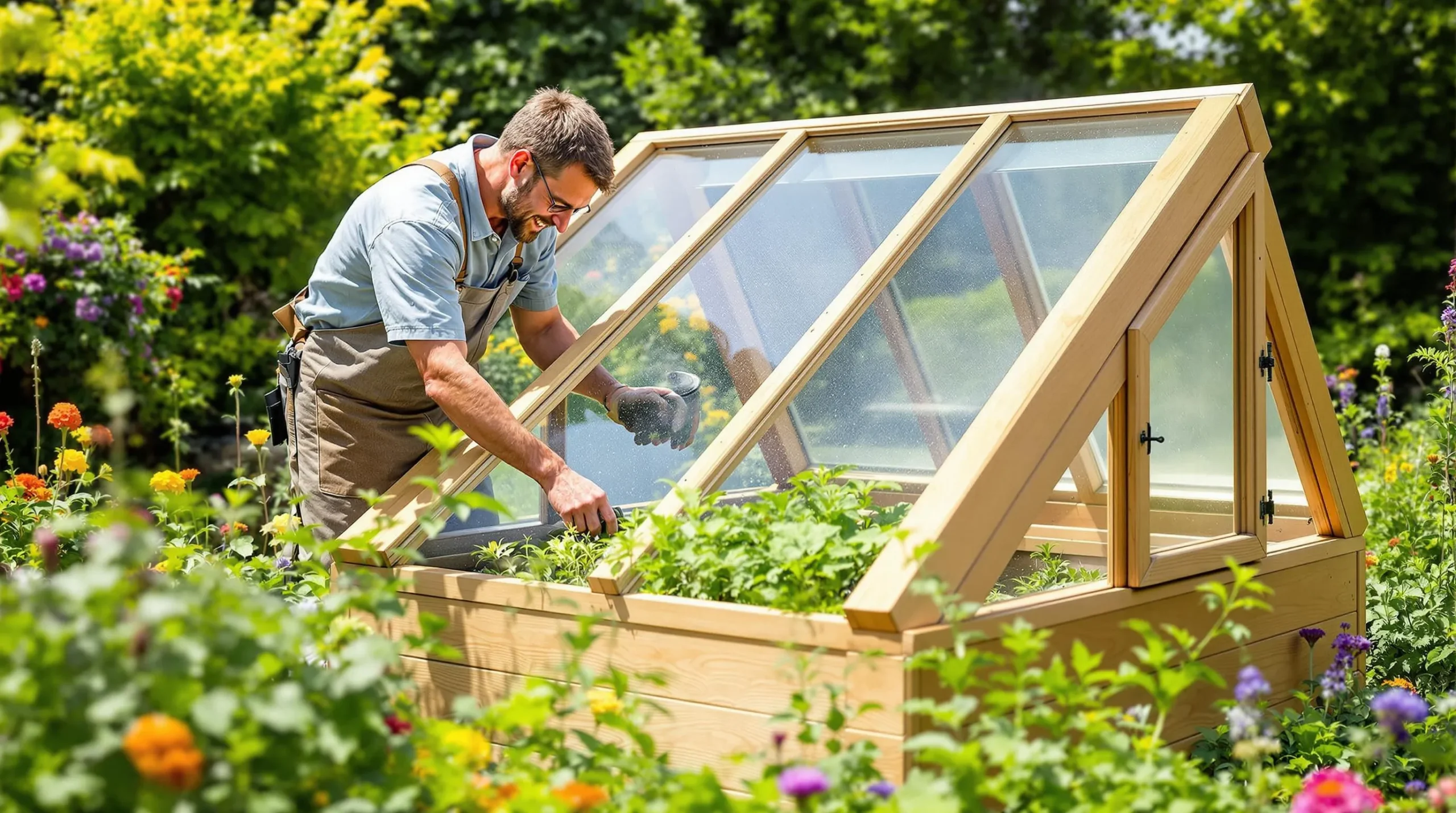
Learn how to make a cold frame to extend your growing season, protect plants in winter, and grow seedlings all year. Simple, cost-effective, and DIY-friendly!